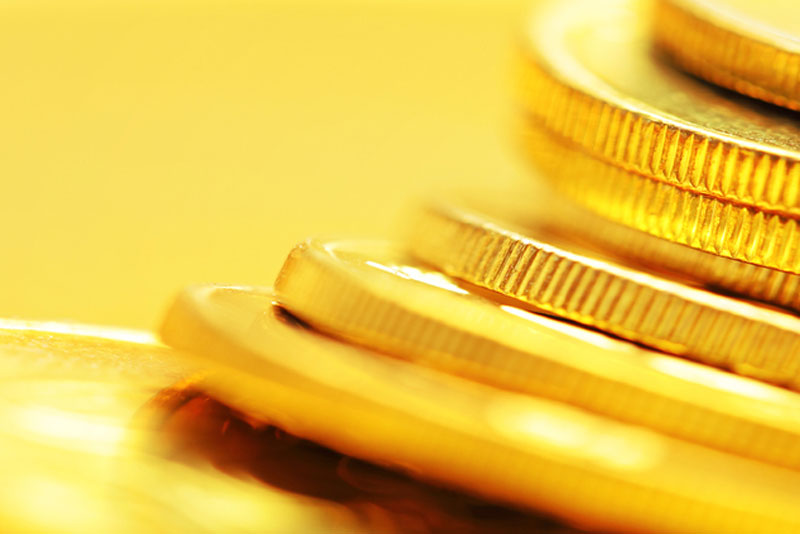How to Spot Fake Gold and Silver Coins (Warning Signs to Look For!)
Counterfeit products are nothing new in any corner of the modern market. A large percentage of the alleged precious metals in circulation are counterfeits. This is a sad reality, especially if you use gold and silver coins as an investment, for a special collection, or as a hobby.
These fake coins are created by con artists and dishonest dealers who are found all over the market waiting to take advantage of unsuspecting buyers. A survey carried out by the Anti-Counterfeiting Task Force in June 2018 rated the Morgan silver dollar as the leading counterfeited U.S. coin.
On the other hand, the U.S. gold and silver American Eagle coins lead the list in the bullion category. Fortunately, the gold sector has put several measures in place to protect gold buyers.
The biggest question facing gold and silver buyers is how can you identify the genuine coins from the fakes?
How to Spot Fake Gold and Silver Coins
Here are the six best ways to spot fake gold and silver coins on the market.
1. The Magnet Test
The process involves taking the gold or silver coin, inclining it at a 45-degree angle, and putting the magnet over it. The silver’s low conductivity should make the magnet slowly slide over the coin. As for a gold coin, the magnet should slide right off.
Both gold and silver are non-magnetic elements. This is a vital fact you should always keep in mind whenever you want to test the legitimacy of gold and silver. If you have supposed sterling silver that attracts a magnet, it is counterfeit. Generally speaking, if your gold or silver coin attracts a magnet, it’s not an authentic coin or piece.
However, a few metal elements are magnetic, including iron, cobalt, and nickel. Besides the ferritic metals, other magnetic metals found on the market include gadolinium, samarium, and neodymium. It is, thus, possible to encounter some metals that are similar to silver and nonmagnetic — zinc, pewter, and aluminum are perfect examples.
It might be confusing at this point if you think about pennies minted in 1943, which are magnetic despite being made from zinc. Zinc is a nonmagnetic metal, but it makes up only a tiny coating of the coins. The rest is composed of steel, a ferromagnetic metal, which explains why the coins are attracted to magnets.
2. The Ping Test
The ping test is another quick way of determining whether silver coins are real or fake. If you drop or strike a legitimate silver coin on a hard surface, it should produce a characteristically long ping sound. The millions of fake coins available on the market are characterized by a dull noise. Based on the sound you get after dropping or striking the coin, you should be able to determine its legitimizes. This test, however, doesn’t tell the levels of purity in the coin, but it is a quick way of weeding out the counterfeits.
Silver and gold coins produce a characteristically solid sound when you drop them on wood and other hard surfaces. In contrast, the fake coins make a deeply hollow thud and a dull noise compared to authentic gold or silver.
3. Visual Inspection
There’s a slight difference in color between genuine and fake gold coins. If you’re familiar with coin appearances, you can most likely identify lettering issues in the inscriptions, which may exist in the wrong font. Plus, the fine details on the design may also appear cruder upon comparison. The tool marks are another significant clue when you’re determining the authenticity of a gold coin.
In the process of trying to hide their imperfections, fake gold coins commonly leave behind a distinctive abrasion, besides altering the mintmark. This is a great way of telling the genuine Morgan dollars apart, thanks to the rare ”CC” mintmark designed by the Carson City mint. It would help if you were cautious about suspicious marks, most of which conspicuously exist next to the key design features of the rare coin.
As mentioned above, coins that are attracted to magnets are fake in most cases. However, it is not always true that coins that don’t stick to the magnet are genuine. After doing the magnet test, you should also include other measures of determining a coin’s legitimacy 一 examining it thoroughly, for instance, while comparing it to a genuine sample is essential. You should also invest in a jeweler’s loupe or magnifying glass, which can come in handy when you’re conducting the comparison.
4. Measuring Weight
The weight plays a crucial role in discovering fake gold coins from real ones. It’s common for gold coins to have different weights despite having the same gold content. The trick in such cases is knowing the standard weight of authentic gold. The standard weight of gold is as follows:
- 24 karat gold coins (1 ounce) 一 for example, Canadian Gold Maple Leaf coins 一 weigh 31.1 grams.
- 22 karat gold coins 一 for instance, South African Gold Krugerrands and American Gold Eagles 一 weigh 33.93 grams.
- There’s also the Saint-Gaudens and $20 Liberty Head gold coins, both of which weigh 33.43 grams.
That said, it would be helpful to bring a reliable portable weighing scale on the purchase day. Many metal experts recommend the American Weigh digital scale, thanks to its unmatched reliability. It is affordable, around $10 at major retail stores, and suitable for both small- and large-scale buyers. As you focus on the weight as a measure of authenticity, consider that an accurate weight doesn’t necessarily guarantee it is 100% original.
Thanks to their standard dimensions, this tip is most suitable for government-minted bullion coins. You should visit the official mint website and familiarize yourself with the measurements before shopping. Whenever you come across an extremely thick or large gold coin, odds are it is a fake.
Most counterfeit gold coins tend to be larger and thicker, making them heavier than the original ones. Besides the weight scale, you should also bring a set of calipers to the store to measure the sizing dimensions.
5. Measuring Diameter and Thickness
As buyers become more and more cautious about fake metals on the market, con artists are also enhancing their skills at the game. Today, they pay close attention to the weight of these fake coins to ensure that they match that of the real ones.
Luckily, matching the diameter or thickness of the authentic coins remains a great challenge for these scammers. A caliper is, thus, an essential requirement whenever you go out shopping for gold coins. Tekton calipers are one of our best recommendations. You should check both the diameter and the thickness of the coins as it is almost impossible to match the weight, thickness, and diameter of real gold and silver coins.
6. The Acid Test
Aqua regia is a mixture of hydrochloric and nitric acid. This method involves scratching the coin on the stone. You can also fill a notch on the coin to kill any chances of accidentally rating plated products as pure. There are many acid kits available for gold and silver, but they do carry risks you should consider before following through.
Common Warning Signs of Fake Gold and Silver Coins
If you still have doubts about the product’s authenticity after the above tests, here are additional warning signs to be cognizant of before buying. Gold, for instance, is an expensive product, and you can’t risk your money when your instincts feel that something is wrong.
Despite the latest move to produce more convincing counterfeits, the market still has numerous distinctively fake coins. It would help if you look for errors in the designs, wrong inscriptional fonts, a soapy or flat appearance, and other missing fine details on the coins.
It’s easy to identify extremely flat or uneven relief as a feature of a fake coin — and it would be best to look out for impossible dates, such as the popular fake-dated 1906 American Silver Eagle, which wasn’t minted until 1986.
Other features to look out for regarding fake precious metals include non-uniform or nonexistent reeds on the edges, seams on the edges, or places where the sprue was filed off from the counterfeit cast. Thanks to federal law, every replica of an existing coin should have the word “copy” stamped on it. Older replica coins were minted with an “R” on them to indicate they were replicas. Most con artists try to hide this stamp, which should be a warning sign. Others include:
- Dealers who rush you into buying
- Prices that seem unreasonably low
- Reluctance to provide photos, concrete details, and a thorough inspection of the coin
- Lack of online ratings and reviews
- Attempts to switch the product after you have checked it out
- Unwillingness to meet and transact in an open place under closed-circuit TV surveillance
Ways to Avoid Being Scammed By Fake Gold & Silver Coins
The best way to stay safe from dishonest dealers is by buying from reputable and established coin dealers like Wall Street Metals. All of our coin inventory has been verified and is housed at the Delaware Depository.
Another tip is to complete thorough research on the identified coin before buying it. Knowledge is power, and it significantly reduces your chances of being fooled while buying gold and silver coins.
If you’re wondering where to buy authentic gold and silver coins, Browse Our Coins at Wall Street Metals and enjoy great deals on our trusted precious metals.



